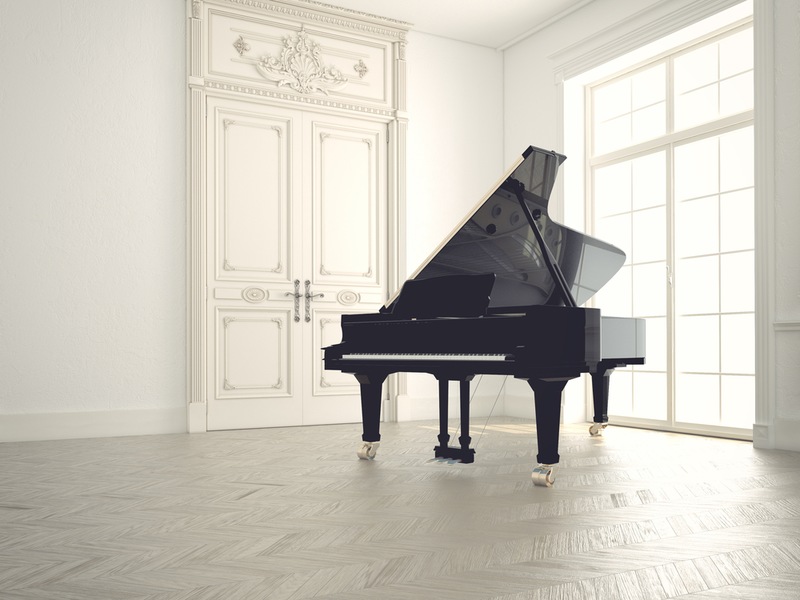Moving a piano is often considered an arduous and daunting task, requiring significant planning and resources. A piano is not only a bulky and heavy object but also highly delicate and valuable, making it even more challenging to transport.
Thus, the question arises – is it possible for an individual to move a piano by themselves? In this article, we will explore various factors that come into play when attempting to move a piano solo and provide some tips and guidelines for doing so successfully.
We will also discuss the advantages and disadvantages of moving a piano by oneself compared to hiring professional movers. Ultimately, this document aims to help readers make an informed decision on whether they should take on the task of moving a piano alone or seek assistance from professionals.
Is it possible to move a piano by yourself?
Moving a piano by yourself is definitely possible, but it requires careful planning and execution. It is not an easy task, and depending on the size and type of piano, it can be physically demanding as well. However, with the right tools and techniques, it is achievable.
One of the main challenges of moving a piano alone is its weight. Depending on the model, a piano can weigh anywhere from 300 to 1,200 pounds. This means that proper lifting and carrying techniques must be used to prevent injury.
Another crucial factor to consider is the piano’s fragility. Pianos are delicate instruments with intricate internal mechanisms that can easily get damaged if not handled properly during a move. Therefore, it is essential to have a good understanding of the instrument’s structure and how to protect it during transportation.
Besides, moving a piano requires specialized equipment such as straps, dollies, and ramps. These tools are necessary for safely lifting and transporting the piano, but they can be expensive to purchase or rent. Therefore, individuals considering moving a piano on their own must factor in these additional costs.
Easy ways to move a piano by yourself
Here are some tips and techniques to help individuals move a piano safely and efficiently by themselves:
Plan ahead:
Before attempting to move a piano alone, it is crucial to have a detailed plan in place. This includes assessing the route from the piano’s current location to its destination and identifying any potential obstacles or challenges along the way. It is also essential to measure doorways, stairwells, and hallways to ensure that the piano can fit through without causing damage or getting stuck.
Moreover, planning ahead also involves gathering all the necessary equipment and tools beforehand, including straps, dollies, padding, and gloves. It is also recommended to have a few extra hands available to help with lifting and maneuvering the piano.
Empty the piano:
It is necessary to empty the piano completely before attempting to move it. This includes removing all music books, sheet music, and other items from inside the piano. These items can add weight to the instrument and also risk getting damaged during transportation.
Additionally, it is crucial to remove any detachable parts, such as pedals or legs, and pack them separately in protective padding. This not only makes the piano lighter and easier to move but also reduces the risk of these parts getting damaged or lost during the move.
Protect the piano:
Once the piano is emptied, it is crucial to protect it adequately before moving it. This means covering the piano with padding or blankets to prevent any scratches or dings during transportation. It is also recommended to secure the lid and keyboard cover with packing tape to keep them from opening during the move.
Protecting the piano also involves securing its delicate internal mechanisms. For grand pianos, this means securing the lid and wrapping it with padding to prevent damage to the strings. For upright pianos, the pedals should be secured by using rubber bands or bungee cords.
Lift with proper technique:
As mentioned earlier, lifting a piano requires proper technique to avoid any injuries. The safest way to lift a piano is by using straps designed specifically for this purpose. These straps distribute the weight of the piano evenly, making it easier to lift and carry.
It is also crucial to bend at the knees and keep the back straight while lifting a piano. This reduces strain on the back muscles and prevents any potential injuries. It is recommended to have one person at each end of the piano, with a third person guiding from behind if possible.
Use a dolly:
Once the piano is lifted, it can be placed on a sturdy dolly for easier transportation. It is essential to use a dolly with pneumatic tires, as they can absorb shock and provide a smoother ride for the piano. The piano should be securely strapped to the dolly using heavy-duty straps.
When moving an upright piano on the dolly, it is important to tilt it slightly towards the back so that most of its weight rests on the wheels. This reduces the strain on the person pushing the dolly and also prevents damage to the piano’s legs or pedals.
Move slowly and carefully:
Moving a piano by oneself requires patience and carefulness. It is crucial to move slowly, especially when navigating through doorways, corners, or stairs. One mistake could result in significant damage to the piano or injury to those involved in the move.
It is also important to communicate effectively with the individuals helping in the move. Clear and concise instructions on when and how to lift, turn, or set down the piano can prevent accidents and ensure a successful move.
Consider hiring professional movers:
While moving a piano by yourself is possible, it may not be the best option for everyone. Individuals who are not physically fit or lack experience in moving heavy objects may want to consider hiring professional piano movers.
Professional movers have the necessary tools, equipment, and expertise to handle all types of pianos safely and efficiently. They also have insurance coverage that can provide peace of mind in case of any accidents or damages during the move.
Common mistake to avoid when moving a piano by yourself
While it may seem like an easy and cost-effective option to move a piano by oneself, there are some common mistakes that individuals should avoid. These include:
Not Using Proper Lifting Techniques:
One of the most common mistakes when moving a piano by yourself is neglecting proper lifting techniques. Lifting a heavy object like a piano improperly can lead to serious injuries, particularly to the back, and can also cause damage to the piano. It is crucial to always bend at the knees and lift with your legs, rather than your back, to distribute the weight of the piano evenly across your body.
Moreover, using lifting straps can help further distribute the load and lessen the physical strain. It’s recommended to have at least two people at each end of the piano, and for larger pianos, a third person to guide and balance in the middle.
Not Planning Ahead:
As mentioned earlier, it is crucial to have a detailed plan in place before attempting to move a piano by yourself. This includes assessing the route and measuring doorways and stairwells to ensure the piano can fit through without causing damage or getting stuck. It also involves gathering all necessary equipment beforehand and having extra hands available for lifting and maneuvering.
Not planning ahead can result in delays, accidents, and damages to both the piano and individuals involved in the move. It is always better to take the time to plan properly before attempting to move a piano by yourself.
Not Using Proper Equipment:
Another common mistake when moving a piano oneself is not using proper equipment. Many people make the mistake of trying to move a piano without straps or a dolly, which can result in injuries or damages to the piano.
Using proper equipment, such as lifting straps and a sturdy dolly with pneumatic tires, can make the move much smoother and safer. It is also important to have protective padding or blankets on hand to cover the piano during transportation.
Rushing:
Moving a piano takes time and patience. Rushing through the process can lead to accidents and mistakes that could have been avoided. It is important to move slowly, especially when navigating through tight spaces or stairs, and to communicate effectively with those helping in the move.
Rushing can also result in damage to the piano itself. For example, lifting a piano too quickly or dropping it while trying to rush can cause internal mechanisms to become damaged, resulting in costly repairs.
Not Securing the Piano Properly:
Lastly, not securing the piano properly is a common mistake when moving it by oneself. This can lead to the piano shifting or tipping during transportation, causing damage to both the piano and those involved in the move. It is essential to use straps or ropes that are specifically designed for moving pianos and ensure they are tightly secured before lifting and transporting.
It’s also crucial to properly secure the piano on the dolly and to always keep it tilted towards the back to distribute its weight evenly. This can help prevent accidents and ensure a successful move.
FAQs
Is it possible to move an upright piano by yourself?
Explore the feasibility of moving an upright piano by yourself and understand the precautions necessary when navigating stairs, considering the challenges with piano legs. Learn about the potential risks and damage to the musical instrument, and consider whether it’s advisable to hire professional piano movers for a safer relocation.
Can you move a baby grand piano on your own?
Understand the challenges and considerations when moving a baby grand piano on your own, especially when attempting to move both an upright piano and a baby grand piano. Explore whether using a piano dolly or piano board is feasible without professional piano movers and learn about the precautions necessary to protect the instrument during the move.
Is it possible to move a concert grand piano without professional assistance?
Explore the challenges and possibilities of moving a concert grand piano without professional assistance. Understand the role of moving blankets in ensuring the safety and protection of piano legs and the overall integrity of the grand piano during a DIY move. Consider the complexities involved and whether hiring professional piano movers is the recommended option for a successful and damage-free relocation.
Conclusion:
Moving a piano by oneself requires proper planning, equipment, and technique. It is essential to take precautions to avoid injuries or damages to the piano during the move. While it is possible to move a piano without professional help, individuals should carefully consider their physical capabilities and experience before attempting to do so.
In cases where one may not feel confident or comfortable moving a piano alone, hiring professional movers is the best option to ensure a safe and successful move. Remember to always take your time, communicate effectively with others involved, and secure the piano properly during transport to avoid any mishaps.






